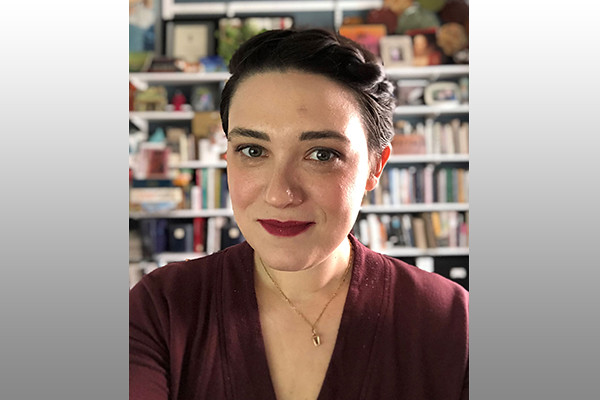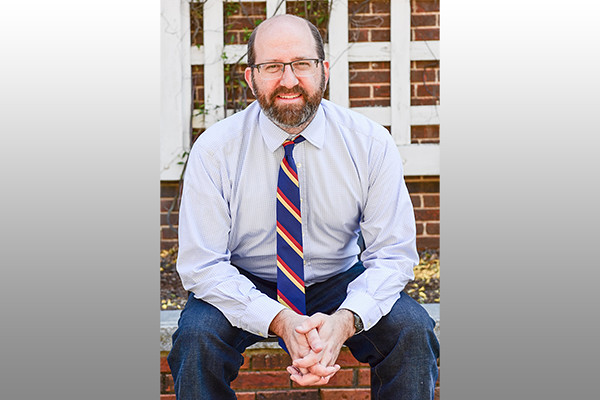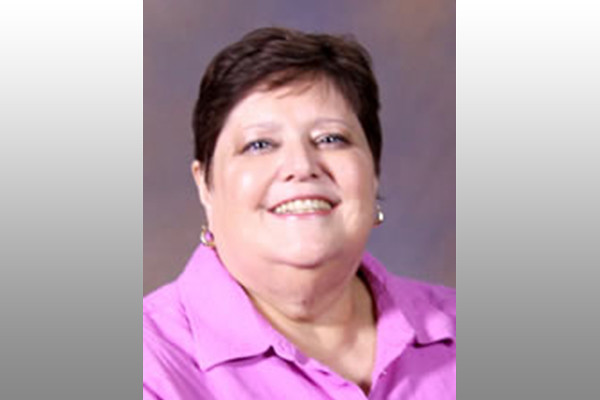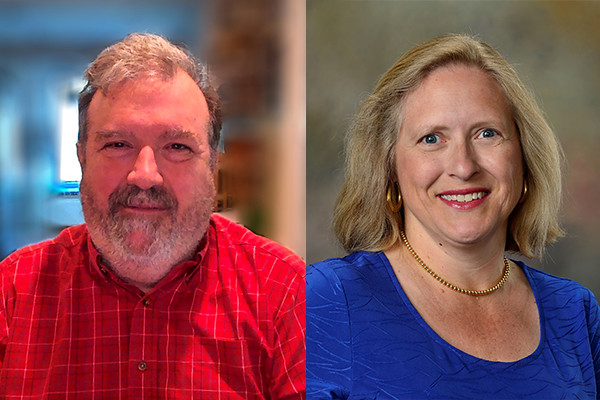College of Liberal Arts professors, staff reflect on transition to online learning at one-year mark
Article body
A year ago, the world came to a screeching halt. Many Auburn University students and faculty were in the process of enjoying their spring breaks while simultaneously hearing rumors about university shutdowns as COVID-19 began to make its way around the U.S. and the globe.
Faculty had to act quickly and implement plans to take their courses online, students weren’t initially allowed back to their dorms to access their textbooks and laptops and officials at every level were making the best decisions they could with the information they had at the time. All the while, hospitals were being overwhelmed and people were suffering and dying at alarming rates. At the time, it was frenzied and worrisome, and there still are a great many unknowns.
Thankfully, vaccines are now being distributed and administered, and Auburn University has been efficient in getting its faculty, staff and students vaccinated. There’s also an abundance of PPE items (masks, hand sanitizer, gloves, etc.), a major reason the university decided to return to on-campus, in-person instruction this spring semester.
“Auburn is enormously blessed in its people, in its resources and in the ways it has been able to deal with the pandemic,” said Emily Friedman, an associate professor of English.
Faculty members and staff from the College of Liberal Arts, or CLA, recently spoke about their recollections from the beginning of the pandemic until present day, offering enlightening perspectives about what took place to keep the college running. Their insight also highlighted the compassion faculty displayed toward students during the uncertain and often frightening times.
Resilience, accolades, compassion–a recipe for remote teaching
During the 2020 spring break, Adam Jortner, the Goodwin-Philpott Professor of Religion in the Department of History, was in Philadelphia for a library company fellowship. After spring break, his world history class would have a big test, as they had every year for the previous 10 years. But then word came that in-person classes were going to be canceled and faculty would have to adapt their classes for online instruction in less than three days.
When Jortner received the notice from the university, he left his fellowship early and returned to Auburn as quickly as possible.
Jortner recalled those early days, “One the first things I did when I learned we’d be closing was call the various counseling services on campus and find out what numbers students should use to get psychological help. Knowing that this pandemic was something we all were going to be dealing with and that everyone would have some fear and anxiety—I called them up and asked about best practices.
“I also knew my job as a professor in this situation is to promote well-being and to keep calm and really think about what’s going to be safe and how our actions affect other people. I knew I needed to model that behavior and provide information to my students, many of whom had only been here a semester at that point.”
Jortner specializes in the history of American Christianity and joked that historians are socially distanced just by the nature of their work, so that part of the equation would be easy for him. What wouldn’t be so easy was deciding what to do about the big test his students were supposed to take.
“It was a hard decision to make, but students were home in their various states across the country without their books, so I canceled the test. They were all very relieved by that decision,” Jortner recalled.
With the decision of what to do about the test out of the way, Jortner turned his focus and time to discovering more about Canvas, the learning management software both faculty and students use to participate in virtual courses.
“I was plotting ways that I could continue to have a worthwhile education experience online—which is different than in person,” Jortner said.
Jortner said his thought process essentially became twofold: figuring out how to scale back what he normally did in person, while still giving the students the information they needed.
“I listen to Pope Francis a lot, and he asked, ‘Can you ever have too much compassion?’” Jortner said. “I tried to let that guide me. It helped me clarify things and gave me a sense of purpose. And it guided my students too because they admitted some of their teachers became more insistent on getting all the Ts crossed and Is dotted.
“Some of the students said they were having a really hard time with it. I was teaching this huge class, and many of them were in college for the first time, so I let compassion be my guide.”
For his efforts to keep his class engaging and informational, and for keeping his students’ well-being a priority, Jortner topped BuzzFeed’s list of “17 Teachers Who Deserve an A++ For Their Efforts to Educate Their Students In Quarantine" in March 2020.
Compassion also was at the heart of Friedman’s approach to her class, as well as to the graduate teaching assistants who were learning how to teach.
Friedman is a scholar of the long 18th century (1660-1835) who uses book history and digital practices in her classroom and in her research.
“I have a firm pedagogical belief that you cannot assume what students want, you have to ask them,” Friedman said. “So, I send out a survey every semester anonymously asking all kinds of questions about the class subject matter, but also including questions of, ‘How are you?’ and ‘What concerns and anxieties do you have?’ I try to meet students literally where they are.”
Friedman also was out of town when she received the information about classes going remote.
“I was in Washington, D.C.,” she said. “I always go there to visit my nephew during spring break for his birthday. His birthday party was the first thing canceled in the pandemic. It was really difficult to explain to a kid who just turned 5 that we can’t have it and we can’t tell you when it’s going to be.
“It was heartbreaking because I’ve moved heaven and earth the past five years to see my godson for his birthday. To the extent that children get it, he gets it, but it’s still hard.”
Friedman made the difficult decision to leave D.C. for Auburn as soon as possible.
“I didn’t know when I might be able to come back, so basically I got on a plane, flew home, got in my car, drove home, went into quarantine and have pretty much not left the house,” she said.
Friedman was named a 2021 winner of the American Society for Eighteenth-Century Studies' (ASECS) Innovative Course Design competition. She also is at work planning her next innovative course on narrative structures in video, board and role-playing games, to be offered in fall 2021.
While Friedman had the software, hardware and knowledge to convert her classes to the online realm, there was the disappointment of not being on campus and inability to visit the library’s special collections. It’s something she says she looks forward to being able to do again, perhaps in the fall.
A temporary measure leads to new approach
Susan Fillippeli, a lecturer in the School of Communication and Journalism, was visiting family in North Carolina during spring break 2020. Fillippeli recalled telling her family she wouldn’t be surprised to learn that Auburn was going remote.
“A few days later, the announcement was made and there was not a lot of time to prepare, but we jumped right in,” Fillippeli said. “It was a very fast transition. I was teaching an overload of five classes—three were in person, and two were already distanced learning, so those just went on as usual.”
This past fall, Fillippeli taught legal communication, a class that meets for two-and-a-half hours every week. The class historically met in person and took that time to cover as many components as it could leading up to its big project at the end of each semester—a mock trial.
Because of the pandemic, Fillippeli had to adjust how many people can meet in person at one time, so she split the group of 30 into two teams who take turns meeting each week. When a team isn’t meeting with Fillippeli in class, it is working on assignments in theory and knowledge of a selected topic. When they next meet in-person, that entire time is dedicated to a skill pivotal to mock trial—opening statements, questioning, closing statements, jury selection and jury deliberation.
At the end of the semester, the teams go before a Lee County circuit judge to present their mock trials. The teams travel to the Lee County Justice Center, and the judge presides over their cases.
“He sits there in his robe, and the class loves this. It’s such a great experience for them,” Fillippeli said.
Previous classes have done well during the mock trials, but Fillippeli said this class, in particular, was extraordinary.
“Having time to really delve into all of that made a big difference when it came to the mock trial,” she said. “I really saw a difference, and the judge did, too.”
Fillippeli said the difference was so noticeable that she will be conducting all her future legal communication classes this way.
“I think there’s a perception that teaching remotely decreases the amount of work, but in reality—and especially if you’re trying to do it consciously and well—it doubles or even triples the amount of work that you’re doing," Fillippeli said.
The fundamentals
The faculty interviewed for this story said they prefer in-person teaching so they can “read the room” and get to know students better. However, in an effort to make the best of the situation, many faculty had to adapt to new technology and a different way of teaching. To do this effectively, many of them turned to the College of Liberal Arts' Instructional Technology staff.
“In the beginning, we were just trying to make sure faculty and staff had the hardware they needed, which included laptops and web cameras,” said Darrell Crutchley, CLA’s Informational Technology manager.
Thankfully, Crutchley and Instructional Technology Specialist Stacey Powell already had the knowledge and resources to assist faculty and staff throughout the transitional phases of remote teaching.
Powell said that, thanks to many previous workshops she and the IT office hosted, many faculty members were ready for the switch to online and distance learning.
“We had a history of face-to-face workshops about teaching online (since 2014), so we adapted those and turned them into fully online workshops,” Powell said. “We were truly modeling how to teach online in a fully online format.”
Crutchley and Powell said they both stay on top of the different instructional technologies that debut, and since they’ve both been in their positions for many years, they have a great network of people around campus.
“Whenever one of us had an issue, someone would ask the group if anyone else was experiencing the same issue, and you always had an answer in five minutes or less,” Crutchley said.
That network, combined with the workshops, led to a quick and seamless transition, which was noticed and appreciated by faculty.
“I remember calling on our IT office a lot,” said Jortner, who recalled conferring with the IT staff for his technical needs and his colleagues who were able to share some of their online teaching experiences with him.
“I felt very supported by CLA IT and the Biggio Center,” Friedman recalled. “Thanks to them, I was able to see Canvas from the student perspective, which was very beneficial. They worked so hard to help us out, and their expertise and guidance were invaluable.”
CLA Dean Joseph Aistrup applauded the resourcefulness and determination of everyone involved.
“I’m extremely proud of the dedication, compassion and adaptability our faculty and staff have displayed during the pandemic,” Aistrup said. “It was not easy, but they stepped up and did what needed to be done to ensure our students were getting the best possible education during these extenuating circumstances.”
Related Media
Media interested in this story can contact Communications Director Preston Sparks at (334) 844-9999 or preston.sparks@auburn.edu.
Auburn University is a nationally ranked land grant institution recognized for its commitment to world-class scholarship, interdisciplinary research with an elite, top-tier Carnegie R1 classification, life-changing outreach with Carnegie’s Community Engagement designation and an undergraduate education experience second to none. Auburn is home to more than 30,000 students, and its faculty and research partners collaborate to develop and deliver meaningful scholarship, science and technology-based advancements that meet pressing regional, national and global needs. Auburn’s commitment to active student engagement, professional success and public/private partnership drives a growing reputation for outreach and extension that delivers broad economic, health and societal impact.








